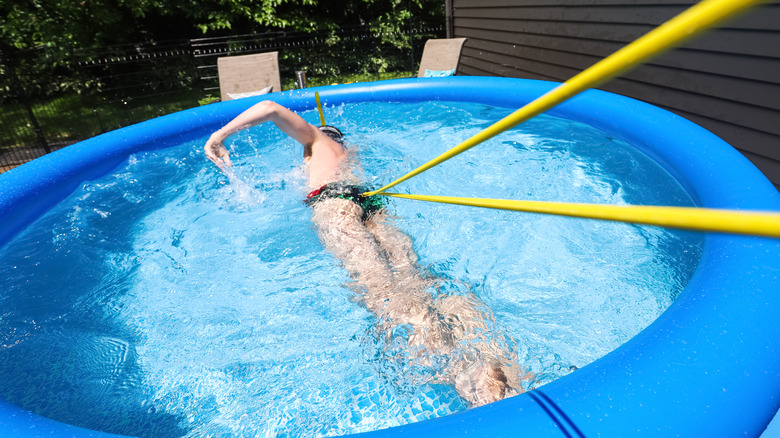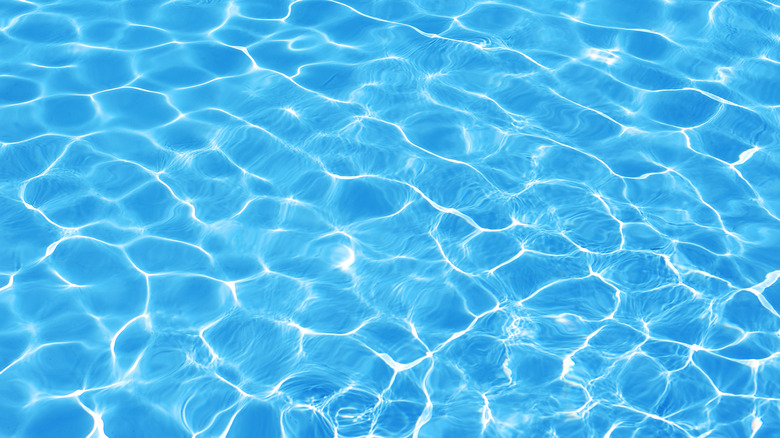Everything You Need To Know About Swim-In-Place Pools
It's no secret that swimming is an incredibly effective, full-body workout. Though you risk some minor hair damage or itchy eyes, the calorie burn, muscle tone, and feeling of buoyancy are well worth it for many people. The low impact is great for anyone recovering from injury, pregnant people, or high-impact athletes looking for an activity for a recovery day (via Just Swim).
But not all of us have a full-length pool in our backyards, access to a public swimming pool, or the desire to swim with others in the local gym's lap pool. So some swim enthusiasts are turning to swim-in-place pools as an easy solution. These let you do the work of swimming laps while taking up far less real estate in your backyard. It's essentially like a treadmill, but for swimming! And this way you don't have to share a lane with anybody. Want to know more? Let's dive in.
What are they, and how do they work?
Ranging from about 8 to 20 feet, you'll find swim-in-place pools in above-ground and in-ground forms. Like hot tubs, the lowest priced options have jets to provide currents, though higher-end models have quieter, more energy-efficient paddlewheel or propeller current options (via SwimEx). Luxurious models by companies like Endless Pool and Royal Swim Spa have seats, hot tub accessories, and more, and can cost in the high four- to five-figure range.
Other companies, like Swim Gymm, make budget-friendly versions that are more suitable for renters or people who don't want to give up all their backyard space because they are less permanent. If you have a backyard pool already but it's not particularly long, swim-in-place harnesses like the one made by HomeSwimmer are a great choice. With so many price points, tech, and property impact options, swimming in place is an activity accessible to many types of people.


